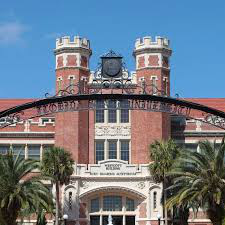Speaker
Description
We perform a calculation of the interaction of the $ D \bar{D} $, $ D_{s} \bar{D}_{s} $ coupled channels and find two bound states, one coupling to $ D \bar{D} $ and another one at higher energies coupling mostly to $D_{s}^{+} D_{s}^{-}$. We identify this latter state with the $X_{0}(3930)$ seen in the $D^{+} D^{-}$ mass distribution in the $B^+ \to D^{+} D^{-} K^{+} $ decay, and also show that it produces an enhancement of the $D_{s}^{+} D_{s}^{-}$ mass distribution close to threshold which is compatible with the LHCb recent observation in the $B^+ \to D_{s}^{+} D_{s}^{-} K^{+} $ decay which has been identified as a new state, $X_{0}(3960)$.
| speaker affiliation | Kocaeli University, Department of Physics |
|---|

